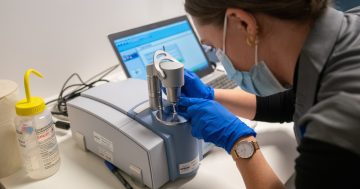
Every day, general practitioners in Canberra are confronted with patients asking, often pleading, for drugs of addiction.
The two most sought-after drugs of addiction are those belonging to the opioid family and those belonging to the group of medications called benzodiazepines. Both drugs have a high potential for abuse and are highly addictive, and abrupt cessation of either drug can be catastrophic for the user.
Opioids are generally used for pain, and the most commonly prescribed opioid in Australia is oxycodone. Endone is the short-acting form of the drug which is used for acute pain, and Oxycontin is the longer-acting form used for chronic pain and cancer pain.
Benzodiazepines can be used for numerous medical conditions but are most commonly used for the short-term treatment of insomnia and anxiety. There are many different types of benzodiazepines, with a plethora of brand names: diazepam (Valium), lorazepam (Ativan), and alprazolam (Xanax or Kalma). Recently, alprazolam became a restricted schedule 8 substance as it has been associated with many drug-related deaths and crimes where the perpetrator claims that they have no memory of the incident.
It is difficult to ascertain exactly how many deaths are caused by prescription drugs in Australia as tragic deaths are often caused by a combination of contributing factors. But according to the Australian Bureau of Statistics, drug overdose deaths totalled 1,427 in 2012, which outnumbers road deaths by 89 in the same year. And according to Australian National University researcher David McDonald, 70 per cent of Australian opioid deaths can be attributed to legal medications – the other 30 per cent being attributed to heroin.
Prescription drug abuse is a medical problem just as much as it is a political one. In many cases opioids and benzodiazepines are very effective medications but medical practitioners are often reluctant to prescribe them in the fear that their patients may be ‘doctor shopping’ in order to feed their habit.
For instance, Canberra’s Phillip Medical Centre displays a sign on the front counter informing patients that the practice will not prescribe any drugs of addiction.
This type of attitude can result in negative health outcomes.
Canberra’s Cincotta Discount Chemist in Phillip has expressed concern to RiotACT regarding such a blanket policy after being confronted by a young patient’s mother whose son had recently been in a car accident. The child presented to a doctor with pernicious vomiting (uncontrolled vomiting). The doctor prescribed a medication to stop the vomiting but it was the pharmacist’s opinion that the child was suffering from shock and should have been prescribed a short course of Valium to control the vomiting and calm the child. After explaining this to the mother, she later returned with a prescription for Valium from another doctor.
Many ACT medical professionals have been calling out for a real-time database that can be accessed by prescribers and dispensers in order to ascertain whether a patient has been ‘doctor shopping’ or not.
It is an unfortunate reality for many Canberrans that they may not be prescribed the appropriate medications because of the legitimate apprehensions of a medical practitioner.
The central political concern is that the privacy of a patient must be considered if a real-time database was to ever be established in the ACT. It is also a political concern that if a prescriber denies a patient a certain medication, the patient may seek a more dangerous medication illegally.
As a politician who is deeply concerned with this issue, it is my view that the actions of a minority should not tarnish the majority from receiving the good health care that we all deserve.





















